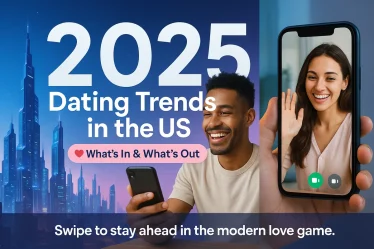
Flirting is an art form—a delicate dance of expressing interest and building connection without crossing boundaries or causing discomfort. Mastering this skill can enhance your social interactions, boost your confidence, and potentially lead to meaningful relationships. This comprehensive guide will provide you with practical tips, common pitfalls to avoid, and insights into effective flirting techniques, all aimed at helping you navigate the world of flirtation gracefully and without embarrassment.
Understanding the Essence of Flirting
At its core, flirting is playful behavior intended to express romantic or sexual interest. It’s a way of signaling attraction while keeping the interaction light and enjoyable. Effective flirting involves a combination of verbal communication, body language, and emotional intelligence. The goal is to create a connection without making the other person feel uncomfortable or pressured.
The Importance of Authenticity
One of the foundational principles of successful flirting is authenticity. Pretending to be someone you’re not or using canned pickup lines often comes across as insincere and can be off-putting. Instead, focus on being yourself and highlighting your genuine qualities. Authenticity not only makes you more approachable but also sets the stage for a more meaningful connection.
Body Language: The Unspoken Communicator
Non-verbal cues play a significant role in flirting. Being mindful of your body language can greatly influence the outcome of your interactions. Here are some key aspects to consider:
- Eye Contact: Maintaining appropriate eye contact signals interest and confidence. However, it’s essential to strike a balance; too much eye contact can be perceived as intense, while too little may indicate disinterest. Relationship experts suggest techniques like the “Triangle Method,” which involves subtly shifting your gaze between the person’s eyes and mouth to create a sense of intimacy.
- Smiling: A genuine smile can make you appear more approachable and friendly. It sets a positive tone for the interaction and can help put the other person at ease.
- Open Posture: Facing the person directly with an open stance (uncrossed arms and legs) conveys openness and interest. Avoiding closed-off postures can prevent sending unintended signals of disinterest or discomfort.
Verbal Communication: Crafting the Right Message
What you say and how you say it are crucial components of flirting. Consider the following tips:
- Compliments: Offering sincere compliments can make the other person feel valued. Focus on specific attributes or behaviors rather than generic comments. For example, “I admire your passion for art; it’s inspiring,” is more impactful than a vague “You’re interesting.”
- Humor: Light-hearted jokes and playful teasing can create a fun atmosphere. However, be mindful to avoid jokes that could be misinterpreted or offensive. The goal is to make the person smile, not to cause discomfort.
- Active Listening: Show genuine interest in what the other person is saying. Ask open-ended questions and listen attentively to their responses. This not only demonstrates respect but also helps in finding common ground.
Common Flirting Mistakes to Avoid
Being aware of common pitfalls can help you steer clear of embarrassing situations. Here are some mistakes to watch out for:
- Overly Sexual Advances: Being too forward with sexual comments or actions early on can be off-putting and may come across as disrespectful. It’s important to build rapport and ensure mutual interest before escalating the interaction.
- Talking Too Much About Yourself: Dominating the conversation without giving the other person a chance to share can signal self-centeredness. Aim for a balanced exchange where both parties contribute equally.
- Negative Talk: Complaining or speaking ill of others can create a negative atmosphere. Keeping the conversation positive and uplifting is more likely to foster a pleasant connection.
- Ignoring Boundaries: Failing to recognize and respect personal boundaries can lead to discomfort. Pay attention to verbal and non-verbal cues to gauge the other person’s comfort level.
Building Confidence in Flirting
Confidence is attractive, but building it requires practice and self-awareness. Here are some strategies to boost your confidence:
- Self-Reflection: Understand your strengths and areas for improvement. Being aware of what you bring to the table can enhance your self-assurance.
- Practice: Engage in social interactions regularly to build your conversational skills. The more you practice, the more comfortable you’ll become.
- Mindfulness: Being present in the moment can reduce anxiety. Focus on the interaction at hand rather than worrying about potential outcomes.
The Role of Rejection
Rejection is a natural part of flirting and dating. It’s essential to handle it gracefully:
- Don’t Take It Personally: Understand that not every interaction will lead to a connection, and that’s okay. It doesn’t diminish your worth.
- Learn and Move On: Reflect on the experience, learn from it, and apply those lessons to future interactions.
Flirting in the Digital Age
With the rise of online dating and social media, flirting has also taken on digital forms. Here are some tips for online flirting:
- Personalized Messages: Instead of generic greetings, reference something specific from the person’s profile to show genuine interest.
- Respectful Communication: Maintain the same level of respect and consideration online as you would in person. Avoid making assumptions or sending unsolicited explicit content.
- Patience: Building a connection online may take time. Be patient and allow the relationship to develop naturally.
Conclusion
Flirting is a nuanced and enjoyable way to express interest and build connections when done respectfully and authentically. By understanding the importance of body language, engaging in meaningful verbal communication, avoiding common mistakes, and building confidence, you can navigate the art of flirting without embarrassment. Remember, the key is to be yourself, respect boundaries, and enjoy the process of connecting with others.



